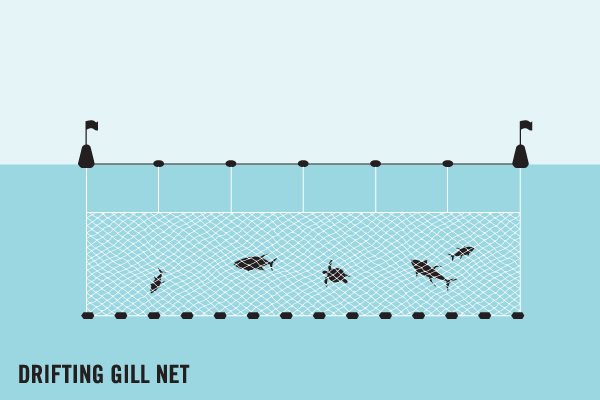Average Weight/Length
Seldom eaten because of a general prejudice against eating "Bonitos" of any sort. Indeed, the flesh is dark but not bad when boiled and made into Tuna salad.
Other "Popular" Names for this Fish
Bonito, Tinker Mackerel
Location Habitat
The open seas, but often near deeper reefs. Atlantic, Indian and Pacific (Western Central). Eastern Pacific population recognized as subspecies Auxis thazard brachydorax. Many authors have used the name Auxis thazard as including Auxis rochei in the belief that there was only a single worldwide species of Auxis. Highly migratory species,
Biology & Physical Description
The Frigate Mackerel, shown here, and the Bullet Mackerel, Auxis rochei, are two similar species confused by scientists and unrecognized by many anglers, who generally pass them off as juvenile Little Tunny. They do have the wavy lines of Little Tunny on the posterior dorsal area, and one of the species also has dots under the pectoral fin as the Little Tunny does. The anterior and posterior dorsal fins are widely separated, however, on the Frigate Mackerel, and nearly touching on the Little Tunny. Another smaller member of the clan is the Chub Mackerel, Scomber japonicus, also known as Tinker Mackerel, distinguished by black spots along the side. Dorsal spines (total): 10 - 12; Dorsal soft rays (total): 10-13; Anal spines: 0; Anal soft rays: 10 - 14. Back bluish, turning to deep purple or almost black on the head. A pattern of 15 or more narrow, oblique to nearly horizontal, dark wavy lines in scaleless area above lateral line. Belly white. Pectoral and pelvic fins purple, their inner sides black. Body robust, elongate and rounded. Teeth small and conical, in a single series. Pectoral fins short, but reaching past vertical line from anterior margin of scaleless area above corselet. A large single-pointed flap (interpelvic process) between pelvic fins. Body naked except for the corselet, which is well developed and narrow in its posterior part (no more than 5 scales wide under second dorsal-fin origin). A strong central keel on each side of caudal-fin base between 2 smaller keels
Life Cycle & Mating Behavior
In correlation with temperature and other environmental changes, the spawning season varies with areas, but in some places it may even extend throughout the year.
Geographic Species Map (Fishbase.org Map)
|
|

|
Summary of Distribution: Atlantic, Indian and Pacific (Western Central). Eastern Pacific population recognized as subspecies Auxis thazard brachydorax. Many authors have used the name Auxis thazard as including Auxis rochei in the belief that there was only a single worldwide species of Auxis. Highly migratory species, |
|
Note: Distribution range colors indicate degree of suitability of habitat which can be interpreted as probabilities of occurrence (fishbase.org) |
|
Sport Fishing Techniques
|
|
Gill netsGill-nets are the dominant gear in the Indian Ocean. Gill-nets are used in artisanal and semi-industrial fisheries, contributing to 30-40% of the total catch. The net design is comprised of continuous panels of uniform mesh size, aimed to trap fish behind the gills. The International Sustainable Seafood Foundation (ISSF) notes that rates of sharks and turtle by-catch in Indian Ocean gill-net fisheries are high.. |
|
Tackle & Baits
Sturdy spinning, baitcasting and fly tackle should be used, with lines no less than 8-pound test. Small Frigates, such as those frequently encountered on shallow flats, will gulp down almost any sort of natural bait, live or dead, as well as all the popular casting and flyrod lures. Big Frigate Mackerel, however, generally like their meals moving very fast. To assure hookups, you have to use fresh and frisky live fish, or retrieve your artificial lures rapidly, noisily, or both. Topwater plugs are good, as are fast-whipped jigs. Fly rodders often have to work very hard, stripping their streamers or poppers as fast as their elbows will move.
Game Rating
Game Rating : 8.5/10
Game Description :
When targeted (usually as bait for larger fish), the best outfit is a spinning rig with a small jig. Like other species of Tuna, they rank among the best battlers in their size group, mixing fast, zippy runs with as much pulling power as their small size allows.
Food Rating
Game Rating : 8/10
Game Description :
Very good




















 Frigate Mackerel
Frigate Mackerel 


